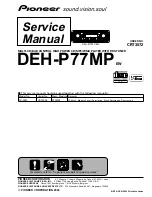
Requirements
Items
4200 in the formula is the management area size of the pool-VOL with System Area.
Total Number of pages =
Σ
(floor(floor(pool-VOL number of blocks ÷
512) ÷ 168)) for each pool-VOL.
floor( ): Truncates the value calculated from the formula in parentheses after the decimal point.
However, the upper limit of total capacity of all pools is 12.3 PB if shared memory is installed.
From 1 to 1,024 volumes (per pool).
Max number of
pool-VOLs
A volume can be registered as a pool-VOL to one pool only.
Up to a total of 128 pools per storage system. The 128 pools include following pool types:
Maximum number of
pools
•
Thin Provisioning (including Smart Tiers)
•
Thin Provisioning Z (including Smart Tiers Z)
•
Fast Snap
Pool IDs (0 to 127) are assigned as pool identifiers.
You can increase pool capacity dynamically. Increasing capacity by one or more parity groups
is recommended by adding pool-VOLs.
Increasing capacity
You can reduce pool capacity by removing pool-VOLs.
Reducing capacity
You can delete pools that are not associated with any THP V-VOLs.
Deleting
From 0 to 65534 (%).
Subscription limit
If you do not specify a value, the subscription is set to unlimited.
Thresholds
•
Warning Threshold: You can set the value between 1% and 100%, in 1% increments. The
default is 70%.
•
Depletion Threshold: You can set the value between the warning threshold and 100%, in
1% increments. The default is 80%.
42 MB
Data allocation unit
The 42-MB page corresponds to a 42-MB continuous area of the THP V-VOL. Pages are allocated
for the pool only when data has been written to the area of the THP V-VOL.
Defined based on the media type (see Drive type for a Smart Tiers tier, below). Maximum 3
tiers.
Tier
(Smart Tiers)
4.0 PB (Total capacity of the tiers must be within 4.0 PB
Maximum capacity
of each tier
(Smart Tiers)
Pool-VOL requirements
Pool-VOLs make up a THP-pool.
Requirements
Items
Logical volume (LDEV)
Volume type
While pool-VOLs can coexist with other volumes in the same parity group, for best performance:
•
pool-VOLs for a pool should not share a parity group with other volumes.
•
pool-VOLs should not be located on concatenated parity groups.
Pool-VOLs cannot be used for any other purpose. For instance, you cannot specify the following
volumes as Thin Provisioning and Smart Tiers pool-VOLs:
•
Volumes used by Business Copy, Auto LUN, Continuous Access Synchronous, High
Availability, or Continuous Access Journal
•
Volumes defined by Cache Residency
Thin provisioning requirements
63
Содержание XP7
Страница 229: ...Select LDEVs window Available LDEVs table Description Item LDEV identifiers LDEV ID Create Resource Groups wizard 229 ...
Страница 303: ...Pools Volume tabs Pools Volume tabs 303 ...
Страница 378: ...Add LUN Paths wizard Select LDEVs window Available LDEVs table 378 LUN Manager GUI reference ...
Страница 381: ...Select Host Groups window Available Host Groups table Add LUN Paths wizard 381 ...
















































